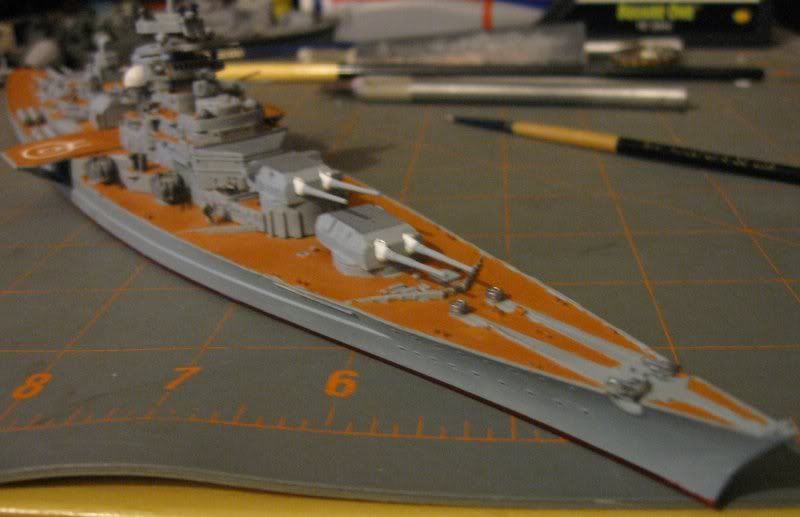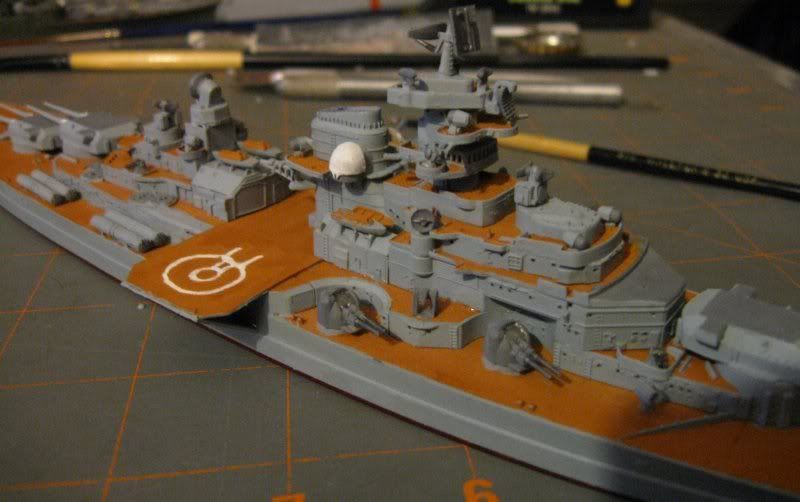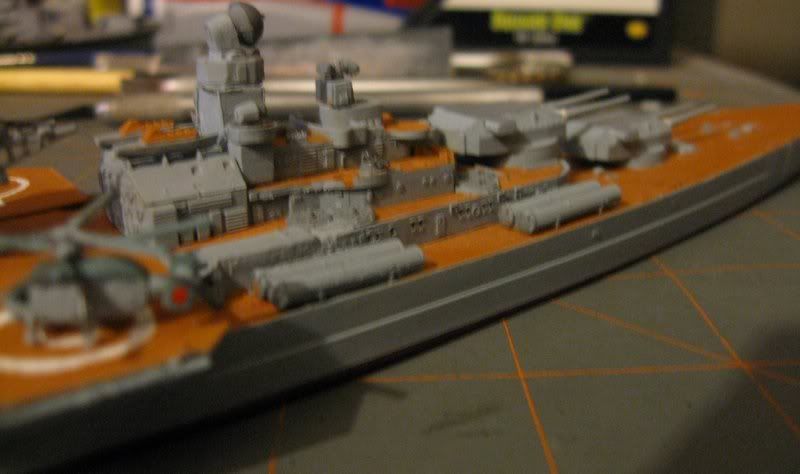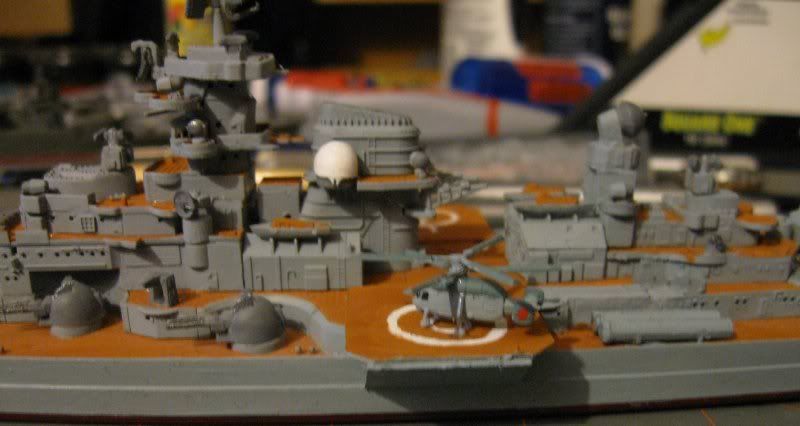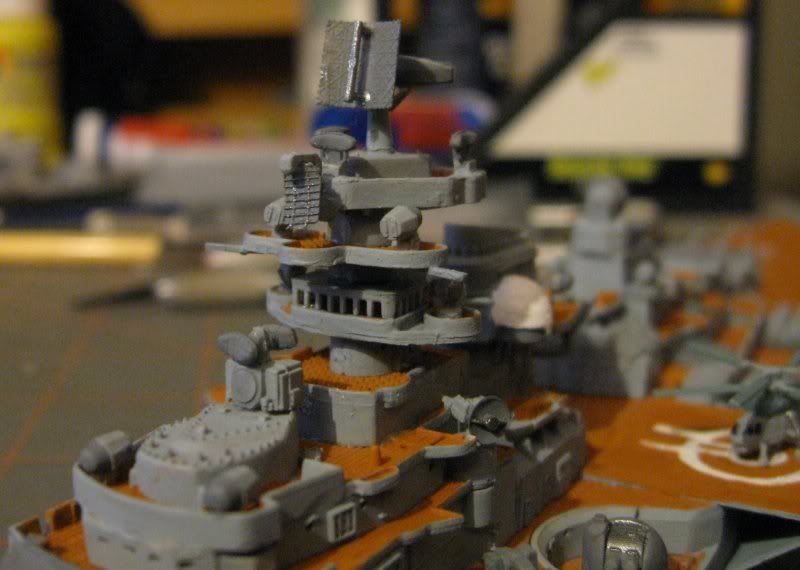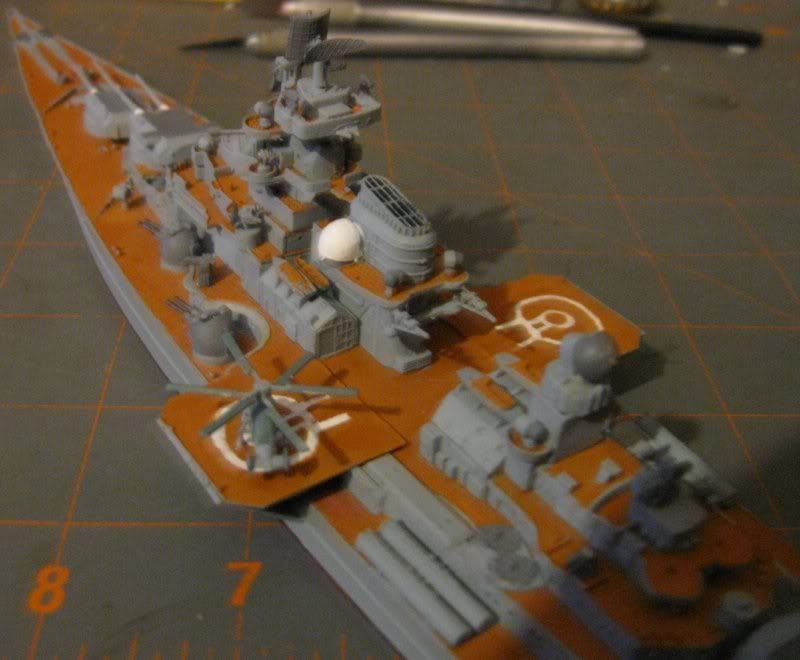19Delta
Cavalry Scout
This is more of a brain storm thread than a unit preview. Any units that I make that come of this will be found in the shipyard.
I've been thinking a lot recently about the modernized version of the Bismarck that Wyrmshadow previewed a few years ago. It has inspired me to think of other what-if ships. I have come up with my own idea of a modernized Bismarck and maybe a back story as well.
We all know that the Bismarck was sunk in WWII, but what if Admiral Lutjens had of decided to top off the Bismarck's tanks in the Norweigan Fjords along with Prinz Eugen? The Bismarck wouldn't have been forced to reduce speed when it's rear fuel tanks were contaminated with sea water and could very well have out run the British Home Fleet in pursuit.
After the fight with the Hood and the Prince of Whales, the Bismarck was hit and the her stern was low in the water due to the flooding of fuel tanks, but thanks to superb German engineering, the damage was kept to a minimum. Admiral Lutjens was glad that he decided to refuel with the Prinze Eugen. He knew that if he hadn't of refueled, then he would have had to reduce speed in order to make port for repairs. Now he had just enough fuel to travel at full speed and still make port. The British searched for days for any sign of the Bismarck. While contact was made for brief periods, it was quickly lost again. The Bismarck was too fast for the British battleships to keep up and was thus able to reach the the port in Brest, France to effect repairs. The British knew that the Bismarck was a threat to its lifeline from the United States as long as she was afloat. Hitler's orders were that the Bismarck would not be without sufficient air cover and gave the Luftwaffe explicit orders to protect the Bismarck at all costs until further notice. The Home Fleet was effectively at a stalemate with the Bismarck. The Bismarck could not get far enough outside of Axis waters to have a significant effect on Allied shipping, and the British, despite successful raids that put her in drydock for several months could not get close enough to sink her. The Bismarck took part in the Channel Dash in order to move her to safer waters. She was eventually located with her sister ship Tirpitz and the two conducted raids on the vital supply convoys that were destined for the Soviet Union. The combined might of the Bismarck and the Tirpitz was much more effective than if the Tirpitz were forced to go it alone. The Kriegsmarine adopted a strategy of sending one of the sisters out with the assumption that the British would send every warship it had in order to sink her. When the British took the bait, the other sister would sail from it's port and wreak havoc on the Allied shipping in the area. As a result, the Soviet war machine was deprived of vital supplies that would have otherwise have enabled it to speed up it's campaign against the German war machine. This superb naval strategy was not enough to save the Third Reich from defeat. As the Allies closed in on Berlin, the two sisters were unable to continue operations in the face of overwhelming Allied air and naval supremecy. The Bismarck and the Tirpitz were forced to retreat deep into the Norweigen Fjords and survived the end of the war. The fate of the two sisters were unclear as the Soviets demanded that they should take the two ships as their prizes because of the trouble they caused on Soviet bound convoys. The United States claimed that the two ships were theirs because the ships they sank belonged to the United States and the sailors that were lost were not Soviet citizens. Eventually an agreement was reached and the United States took possession of the Bismarck while the Soviet Union took possession of the Tirpitz. Both countries took the opportunity to inspect the construction of the two vessels and their weaponry. The Bismarck was re-united with once again with the Prinz Eugen. The two were tested and inspected extensively until it was decided that the two were to be used in Operation Crossroads. The Soviet Union after conducting its own tests and inspections decided to complete the four battleships of the Sovietsky Soyuz class that it had began during the war. The now USS Bismarck and the USS Prinze Eugen survived the two blasts and were towed to Kwajelein. The two ships were too radioactive to have leaks repaired, but were somehow able to remain afloat until they could be cleaned and repaired. The ships were placed in mothballs for two years until their fates were decided. During this time the four battleships of the Sovietsky Soyuz were launched and were drawing the attention of NATO. The decision was made, at the insistence of the West German government and due in part to the Soviet Union's decision to return the Tirpitz to East Germany, to return the Bismarck and Prinz Eugen to West Germany. The two ships sat in dry dock for another two years before the West German government undertook efforts to refurbish and modernize the two ships for service in the Cold War. The East Germans naturally followed suit.
This is the back story for the Bismarck, Tirpitz, and the Prinz Eugen. So far, I've only come up with ideas for the Bismarck.
I think the Germans would have updated the armament on Bismarck first. The radar, gun directors, and controls would have naturally have been updated and systems replaced, but the real task would have been updating the main guns. My idea was that the Germans would replace the turrets themselves with something more modern and able to match up to the new Soviet battleships and Bismarck's estranged sister ship that she would most likely have met in battle. US weapons designs would have found a place on Bismarck, but the Germans, having a fascination with large powerful guns would've have probably opted for a more domestic design. I decided that the eight 15 inch guns in four dual turrets would be replaced with 12 guns of 16 to 18 inch design in four triple turrets. Existing AA guns would be replaced with 40mm bofors and even more added as a result of lessons learned during the Pacific War. As time progresses, the secondary armament and AA weaponry would be updated with weapons like Tomahawk cruise missiles in place of the secondary armament and anti-air missiles and the Phalanx and CWIS system in place of the bofors. The Germans would add additional armor to cope with the guns of the Soviet Navy and she would have been updated with a nuclear reactor to maintain her status as a fast battleship.
Comments and other ideas are welcome as I am not very knowledgeable about the various naval weaponry that could be found on warships, so I could use a little help from any of those naval warfare gurus out there.
I haven't put much though into the Prinz Eugen, but I'm thinking the end result would be a ship that has missile armaments as it's main weaponry much like the USS Long Beach.
I'm thinking that the Tirpitz would end up modernized like the Bismarck but with weapons more aspired to Soviet designs as the Soviet Union would obviously have a hand in what the East German government does.
Any thoughts, suggestions, and otherwise are welcome.
I've been thinking a lot recently about the modernized version of the Bismarck that Wyrmshadow previewed a few years ago. It has inspired me to think of other what-if ships. I have come up with my own idea of a modernized Bismarck and maybe a back story as well.
We all know that the Bismarck was sunk in WWII, but what if Admiral Lutjens had of decided to top off the Bismarck's tanks in the Norweigan Fjords along with Prinz Eugen? The Bismarck wouldn't have been forced to reduce speed when it's rear fuel tanks were contaminated with sea water and could very well have out run the British Home Fleet in pursuit.
After the fight with the Hood and the Prince of Whales, the Bismarck was hit and the her stern was low in the water due to the flooding of fuel tanks, but thanks to superb German engineering, the damage was kept to a minimum. Admiral Lutjens was glad that he decided to refuel with the Prinze Eugen. He knew that if he hadn't of refueled, then he would have had to reduce speed in order to make port for repairs. Now he had just enough fuel to travel at full speed and still make port. The British searched for days for any sign of the Bismarck. While contact was made for brief periods, it was quickly lost again. The Bismarck was too fast for the British battleships to keep up and was thus able to reach the the port in Brest, France to effect repairs. The British knew that the Bismarck was a threat to its lifeline from the United States as long as she was afloat. Hitler's orders were that the Bismarck would not be without sufficient air cover and gave the Luftwaffe explicit orders to protect the Bismarck at all costs until further notice. The Home Fleet was effectively at a stalemate with the Bismarck. The Bismarck could not get far enough outside of Axis waters to have a significant effect on Allied shipping, and the British, despite successful raids that put her in drydock for several months could not get close enough to sink her. The Bismarck took part in the Channel Dash in order to move her to safer waters. She was eventually located with her sister ship Tirpitz and the two conducted raids on the vital supply convoys that were destined for the Soviet Union. The combined might of the Bismarck and the Tirpitz was much more effective than if the Tirpitz were forced to go it alone. The Kriegsmarine adopted a strategy of sending one of the sisters out with the assumption that the British would send every warship it had in order to sink her. When the British took the bait, the other sister would sail from it's port and wreak havoc on the Allied shipping in the area. As a result, the Soviet war machine was deprived of vital supplies that would have otherwise have enabled it to speed up it's campaign against the German war machine. This superb naval strategy was not enough to save the Third Reich from defeat. As the Allies closed in on Berlin, the two sisters were unable to continue operations in the face of overwhelming Allied air and naval supremecy. The Bismarck and the Tirpitz were forced to retreat deep into the Norweigen Fjords and survived the end of the war. The fate of the two sisters were unclear as the Soviets demanded that they should take the two ships as their prizes because of the trouble they caused on Soviet bound convoys. The United States claimed that the two ships were theirs because the ships they sank belonged to the United States and the sailors that were lost were not Soviet citizens. Eventually an agreement was reached and the United States took possession of the Bismarck while the Soviet Union took possession of the Tirpitz. Both countries took the opportunity to inspect the construction of the two vessels and their weaponry. The Bismarck was re-united with once again with the Prinz Eugen. The two were tested and inspected extensively until it was decided that the two were to be used in Operation Crossroads. The Soviet Union after conducting its own tests and inspections decided to complete the four battleships of the Sovietsky Soyuz class that it had began during the war. The now USS Bismarck and the USS Prinze Eugen survived the two blasts and were towed to Kwajelein. The two ships were too radioactive to have leaks repaired, but were somehow able to remain afloat until they could be cleaned and repaired. The ships were placed in mothballs for two years until their fates were decided. During this time the four battleships of the Sovietsky Soyuz were launched and were drawing the attention of NATO. The decision was made, at the insistence of the West German government and due in part to the Soviet Union's decision to return the Tirpitz to East Germany, to return the Bismarck and Prinz Eugen to West Germany. The two ships sat in dry dock for another two years before the West German government undertook efforts to refurbish and modernize the two ships for service in the Cold War. The East Germans naturally followed suit.
This is the back story for the Bismarck, Tirpitz, and the Prinz Eugen. So far, I've only come up with ideas for the Bismarck.
I think the Germans would have updated the armament on Bismarck first. The radar, gun directors, and controls would have naturally have been updated and systems replaced, but the real task would have been updating the main guns. My idea was that the Germans would replace the turrets themselves with something more modern and able to match up to the new Soviet battleships and Bismarck's estranged sister ship that she would most likely have met in battle. US weapons designs would have found a place on Bismarck, but the Germans, having a fascination with large powerful guns would've have probably opted for a more domestic design. I decided that the eight 15 inch guns in four dual turrets would be replaced with 12 guns of 16 to 18 inch design in four triple turrets. Existing AA guns would be replaced with 40mm bofors and even more added as a result of lessons learned during the Pacific War. As time progresses, the secondary armament and AA weaponry would be updated with weapons like Tomahawk cruise missiles in place of the secondary armament and anti-air missiles and the Phalanx and CWIS system in place of the bofors. The Germans would add additional armor to cope with the guns of the Soviet Navy and she would have been updated with a nuclear reactor to maintain her status as a fast battleship.
Comments and other ideas are welcome as I am not very knowledgeable about the various naval weaponry that could be found on warships, so I could use a little help from any of those naval warfare gurus out there.
I haven't put much though into the Prinz Eugen, but I'm thinking the end result would be a ship that has missile armaments as it's main weaponry much like the USS Long Beach.
I'm thinking that the Tirpitz would end up modernized like the Bismarck but with weapons more aspired to Soviet designs as the Soviet Union would obviously have a hand in what the East German government does.
Any thoughts, suggestions, and otherwise are welcome.


 :
:





































